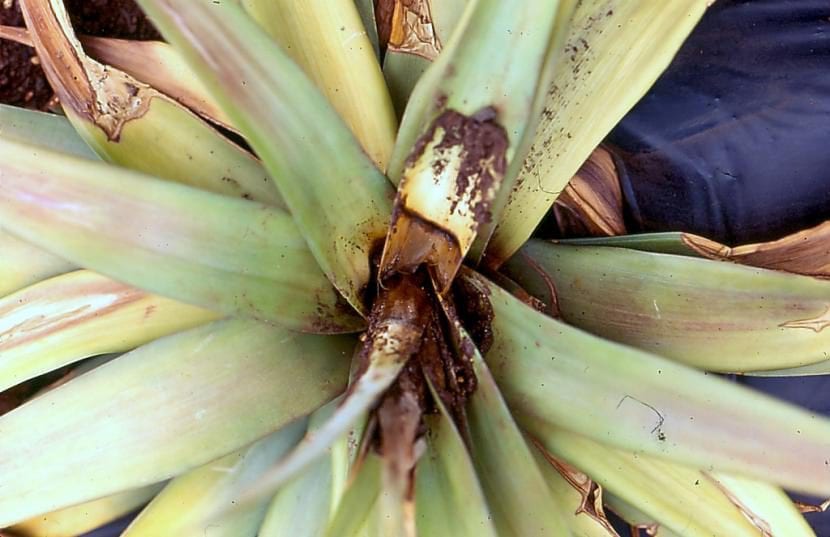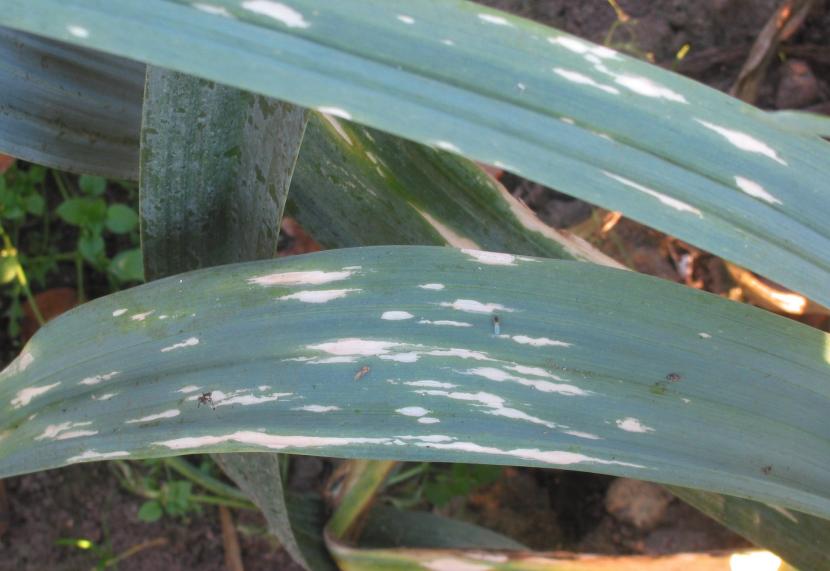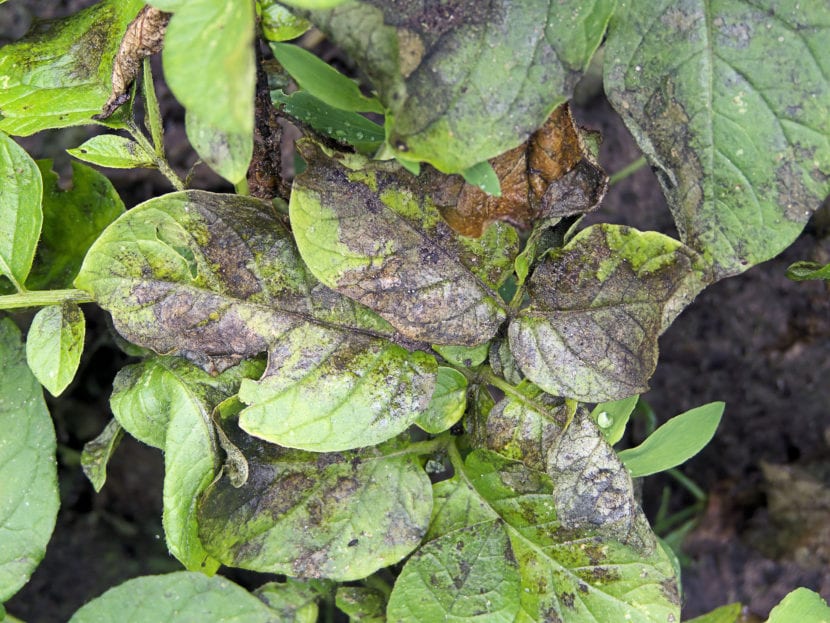
Plants can be affected by many pests and many disease-causing microorganisms. Some of the worst are fungi, since being invisible to our eyes, it is impossible to know when they have begun to cause damage to our favorite plant beings. The phytophthora it is one of the most common, and one of the most difficult to treat.
Therefore, It is important to know what the symptoms are so that you can start treatment as soon as possible.. Thus, we will be able to protect the life of the plants that decorate our garden and / or patio.
What is it?

The phytophthora is a fungus belonging to the genus Phytophthora, which in Greek means destroyer of plants (phyton it is plant and phthora destruction). There are many species, it is estimated that there are around 50, but the most common are:
- Phytophthora alni: causes root rot in alder.
- Phytophthora cactorum: causes root rot in rhododendrons and azaleas.
- Phytophthora cinnamomi- Causes rot in numerous ornamental plants, such as azaleas, yew trees, rodondendrons, forsythia, yew trees, Chamaecyparis, etc.
- Phytophthora fragariae- Causes red rot on the roots of strawberries.
- Phytophthora palmivora: Causes fruit rot of Cocos nucifera and Veitchia merillii palms.
- Phytophthora ramorum: infects more than 60 plant genera, and causes sudden oak death.
- Phytophthora quercina: causes death in oak trees.
- Phytophthora soyae: causes rotting of the roots of soybeans.
Like most pathogenic fungi, likes warm temperatures and humid environments. For this reason, it is very common to have cases of phytophthora in spring, and also in autumn if it is mild.
What are the symptoms it causes?
Being a fungus that lives in the soil, the symptom that we will see first is the root rot. Now, depending on the species, we can also see that the bark cracks and that even resin (gummosis) comes out of the trunk. But in addition, other very common symptoms are wilting of the leaves, defoliation, and / or the appearance of chlorotic spots on the foliage.
How is it treated?
As soon as we see the first symptoms we have to put the treatment, which will consist of apply a fungicide such as Fosetyl-Al by spraying. Of course, you have to know that this fungus cannot be completely eliminated, but it can be controlled. We can buy this product by clicking on No products found..
Can it be prevented?
When we talk about mushrooms and they ask me this I always say the same thing: not quite 🙁. The truth is that it is very difficult to protect plants 100%, but we can do some things to minimize the risk of them being affected:
- Buy healthy plants: no stains or pests.
- Do not water more than necessary: It is always better to fall short than to go overboard with watering. In case of doubt, we will check the humidity of the substrate / soil before watering.
- Fertilize throughout the growing season: this way we will keep them strong.
- Do preventive treatments: Nowadays it is easy to find fungicides for preventive use (like this one from here). Spraying the plants once a month during the summer will help us to have them healthier.

I hope it has been useful to you 🙂.